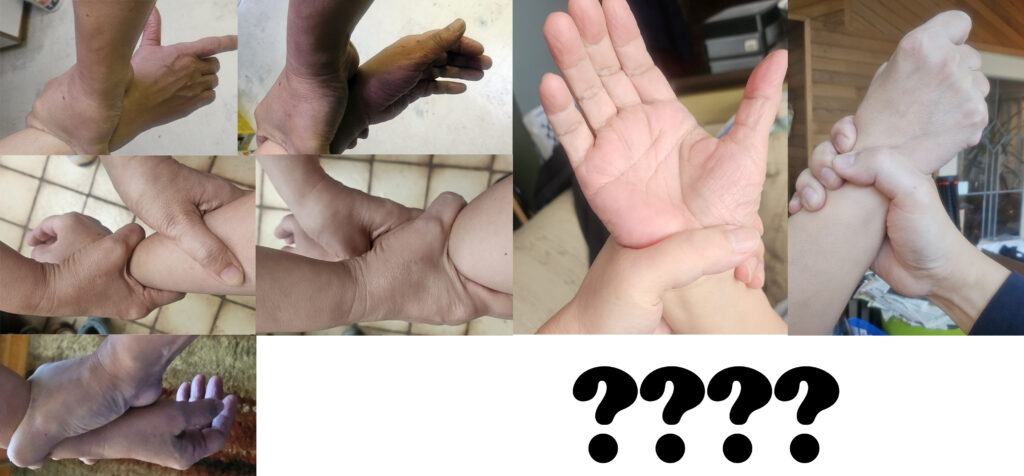DISCUSSION
Common mistakes when pulling guard
- Keeping your back too straight or stiff makes it harder to absorb shovels and hits.
- Leaning forward or backward instead of maintaining a relatively neutral posture.
- “Chicken wings” – failing to tuck your elbows close to your ribs, leading to unnecessary exposure
- Uneven weight distribution between the legs, which compromises mobility.
- Being flat-footed hinders movement and reduces your ability to spring forward quickly.
- Keeping your hands too low or too high, rather than in the opponent’s line of sight to the shoulder, may expose sections of your body without you realizing it.
- A tense body – staying relaxed allows for smoother and more efficient movement.
- Actively coiling the body by using muscle to round the back—rather than allowing the spine to collapse naturally—limits movement in different directions.
- Tensing up before initiating motion telegraphs your movements unnecessarily.
- Shoulder blade shoved forward means that you are not relaxed.
- Sticking the chin / neck out can easily lead to a knockout or concussion if hit.
- Stance too long slows down movements.
- Pulling guard indicates you are intending to defend yourself. Therefore, do not put your guards up until you have decided to go all the way.
SCENARIOS
Three different state of mind while “fighting”:
- Harmonize – Used when dealing with someone you know who has no serious bad intentions toward you. Examples include someone having a bad day, a boss who’s had one drink too many, or a student. The goal is to de-escalate and maintain control without causing harm.
- Punishing / Serious Warning – Used to issue a severe warning to an aggressor. This should only be applied when you have a clear, repeatable advantage over your opponent. The objective is to make them understand that you can seriously hurt them if they continue. They may sustain bruises, but this is their one chance to back off before things escalate further.
- Destructive – Reserved for situations where your life is in danger. The goal is to incapacitate the aggressor completely, ensuring they are unable to continue their attack. Significant or even permanent damage is likely.
Demonstration of how we can escalate from the effortless techniques easily
The effortless techniques are my attempt to show you how we have options to protect yourself and yet not escalate. We can easily change that into joint locks or can hit if necessary.
EXERCISES
The skills learned are only the key to enter a room of possibilities
We revisited all the techniques for freeing yourself from one-handed or two-handed grips with partners in a random sequence. It takes many repetitions to develop the ability to execute these movements instinctively.
Learning to square off with an opponent
We began introducing squaring off with partners. At this stage, the exercise remains very limited—no steps and no contact. The focus is on drawing responses from slow attacks using matching quadrants and developing the ability to read incoming attacks.
Common mistakes
- Hand blocks extending too far outside their quadrants.
- Relying solely on hand defense without shifting the target.
- Telegraphing an attack.
- Over committing any movement.
- Stare at opponents eyes increase your chance of being distracted or may cause hesitation when you hit.


